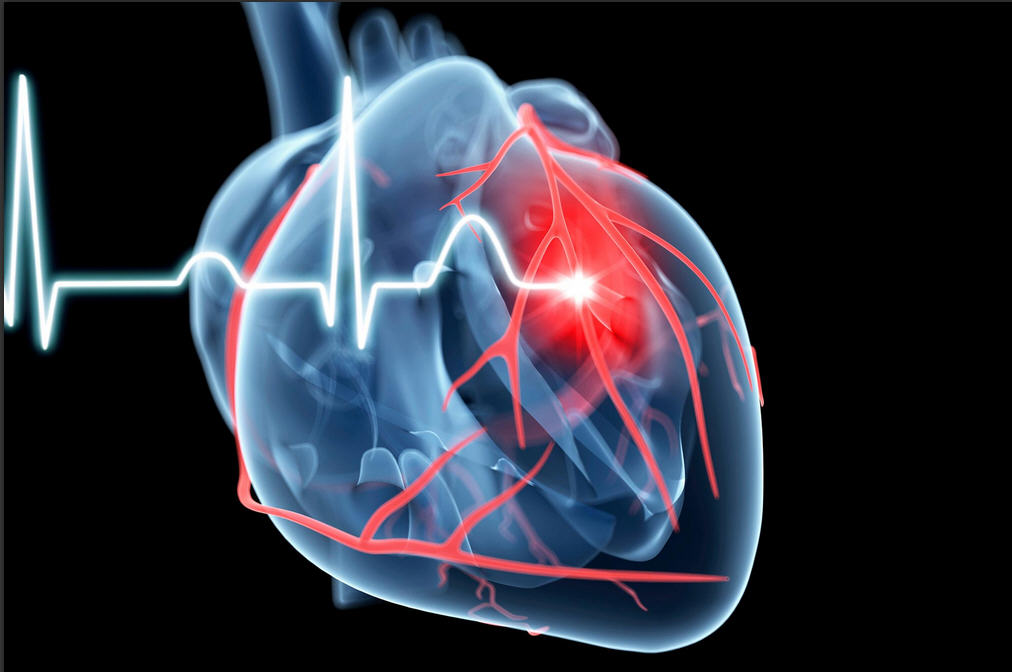博文
哥伦比亚大学研究表明接触金属会增加患心脏病的风险
||
哥伦比亚大学研究表明接触金属会增加患心脏病的风险
诸平
据美国哥伦比亚大学梅尔曼公共卫生学院(Columbia University Mailman School of Public Health, New York, New York, USA)2024年9月22日提供的消息,哥伦比亚大学研究表明接触金属会增加患心脏病的风险(Columbia Study Links Metal Exposure to Increased Heart Disease Risk)。
环境中的金属暴露对冠状动脉钙化(coronary calcium buildup)有显著影响,与吸烟等传统心血管风险因素相当。
哥伦比亚大学(Columbia University)的研究表明,这种暴露不仅会促进动脉斑块的发展,而且可能预示着新的预防和治疗途径。这项历时10年的研究发现,尿液中较高的金属含量与冠状动脉钙化增加有关,这表明迫切需要采取监管措施来控制金属暴露,保护心血管健康。
金属暴露与心血管风险(Metal Exposure and Cardiovascular Risk)
哥伦比亚大学梅尔曼公共卫生学院的一项研究显示,环境污染导致的金属暴露与冠状动脉钙含量增加有关,其水平与吸烟和糖尿病等传统风险因素相当。研究结果表明,体内的金属与动脉斑块的形成有关,并可能为管理和预防动脉粥样硬化提供一种新的策略。研究结果发表在2024年9月18日的美国心脏病学会(American College of Cardiology)旗舰期刊《美国心脏病学院杂志》(Journal of the American College of Cardiology简称JACC)上——Katlyn E. McGraw, Kathrin Schilling, Ronald A. Glabonjat, Marta Galvez-Fernandez, Arce Domingo-Relloso, Irene Martinez-Morata, Miranda R. Jones, Anne Nigra, Wendy S. Post, Joel Kaufman, Maria Tellez-Plaza, Linda Valeri, Elizabeth R. Brown, Richard A. Kronmal, R. Graham Barr, Steven Shea, Ana Navas-Acien, Tiffany R. Sanchez. Urinary Metal Levels and Coronary Artery Calcification: Longitudinal Evidence in the Multi-Ethnic Study of Atherosclerosis. Journal of the American College of Cardiology, 2024. DOI: 10.1016/j.jacc.2024.07.020. Epublished: 18 September 2024. https://www.jacc.org/doi/10.1016/j.jacc.2024.07.020
参与此项研究的除了来自哥伦比亚大学梅尔曼公共卫生学院的研究人员之外,还有来自美国巴尔的摩市的约翰·霍普金斯大学医学院(Johns Hopkins University School of Medicine, Baltimore, Maryland, USA)、美国巴尔的摩市的约翰·霍普金斯大学彭博公共卫生学院(Johns Hopkins University Bloomberg School of Public Health, Baltimore, Maryland, USA)、美国华盛顿大学(University of Washington, Seattle, Washington, USA)、西班牙马德里的卡洛斯三世研究所国家流行病学中心(National Center for Epidemiology, Instituto de Salud Carlos III, Madrid, Spain)、美国西雅图的弗雷德·哈钦森癌症中心(University of Washington, Seattle, Washington, USA)以及美国纽约哥伦比亚大学欧文医学中心(Columbia University Irving Medical Center, New York, New York, USA)的研究人员。
哥伦比亚大学梅尔曼公共卫生学院环境健康科学博士后研究科学家、该研究的第一作者Katlyn E. McGraw博士说:“我们的研究结果强调了将金属暴露作为动脉粥样硬化和心血管疾病的重要风险因素的重要性,这可能导致针对金属暴露的新的预防和治疗策略。”
了解动脉粥样硬化及其触发因素(Understanding Atherosclerosis and Its Triggers)
动脉粥样硬化(Atherosclerosis)是一种由于斑块堆积导致动脉变窄和硬化的情况,斑块会限制血液流动并导致血栓形成。它是心脏病发作、中风和外周动脉疾病(peripheral artery disease简称PAD)的潜在原因,这是最常见的心血管疾病(cardiovascular disease简称CVD)形式。动脉粥样硬化导致冠状动脉钙化(coronary artery calcium简称CAC),可以随着时间的推移进行无创测量,以预测未来的心脏事件。
暴露于环境污染物(如金属)是新近发现的心血管疾病的危险因素,但其与CAC的关系研究并不多。在这项研究中,科学家试图确定尿中的金属水平、金属暴露的生物标志物和体内金属剂量是如何影响CAC的。
金属接触与心脏健康的研究结果(Study Findings on Metal Exposure and Heart Health)
研究人员使用多种族动脉粥样硬化研究(Multi-Ethnic Study of Atherosclerosis简称MESA)的数据,追踪了6418名年龄在45-84岁之间的男性和女性,他们来自不同种族背景,没有临床心血管疾病,在2000-2002年的研究开始时测量尿金属水平。他们检查了非必需金属镉(Cd)、钨(W)、铀(U)和必需金属钴(Co)、铜(Cu)、锌(Zn),这两种(必需和非必需)金属在美国人群中都很常见,并且与心血管疾病有关。广泛存在的镉、钨、铀、钴、铜和锌污染来自农业和工业用途,如化肥、电池、石油生产、焊接、采矿和核能生产。烟草烟雾是镉暴露的主要来源。
结果表明,金属暴露可能通过增加冠状动脉钙化与10年以上的动脉粥样硬化有关。
长期影响及政策影响(Long-Term Impact and Policy Implications)
将尿镉的最高水平和最低水平之间四分位数进行比较,CAC水平在基线时高出51%,在10年期间高出75%。对于尿中的钨、铀和钴,10年间相应的CAC水平分别高出45%、39%和47%。对于铜和锌,在调整了血压、降压药、高胆固醇和糖尿病等心血管风险因素后,相应的估计分别从55%降至33%和从85%降至57%。
尿中金属含量也因人口统计学特征而异。老年参与者、中国参与者和受教育程度较低的参与者尿中金属含量较高。来自美国洛杉矶的参与者尿中的钨和铀含量明显较高,镉、钴和铜含量略高。
该研究小组早期发表的一篇关于动脉粥样硬化(MESA)的论文(earlier paper)研究了在大型流行病学研究中,在小样本量的情况下验证尿液中超微量元素浓度的方法。哥伦比亚大学梅尔曼公共卫生学院环境健康科学助理教授凯瑟琳·席林博士(Kathrin Schilling)说:“随处可见少量的这些金属,但这项研究确实强调了即使是低暴露也会影响心血管健康。在努力控制水、空气和食物中的金属暴露的同时,我们需要更加重视对人群中有毒金属的分析,以预防和干预暴露。”
Katlyn E. McGraw说:“污染是心血管健康最大的环境风险。鉴于这些金属由于工业和农业活动而广泛存在,本研究呼吁提高认识并采取监管措施,以限制接触并保护心血管健康。”
动脉粥样硬化多民族研究(Multi-Ethnic Study of Atherosclerosis简称MESA)由美国国家心肺血液研究所(contracts 75N92020D00001, HHSN268201500003I, N01-HC-95159, 75N92020D00005, N01-HC-95160, 75N92020D00002, N01-HC-95161, 75N92020D00003, N01-HC-95162, 75N92020D00006, N01-HC-95163, 75N92020D00004, N01-HC-95164, 75N92020D00007, N01-HC-95165, N01-HC-95166, N01-HC-95167, N01-HC-95168, and N01-HC-95169 from the National Heart, Lung, and Blood Institute)和美国国家转化科学推进中心(National Center for Advancing Translational Sciences简称NCATS) {grants UL1-TR-000040, UL1-TR-001079, and UL1-TR-001420 from the National Center for Advancing Translational Sciences (NCATS)}的资助。另外还有美国环境保护署(U.S. Environmental Protection Agency简称EPA) 的资助{Science to Achieve Results (STAR) research assistance agreements, No. RD831697 (MESA Air) and RD-83830001 (MESA Air Next Stage), awarded by the U.S. Environmental Protection Agency (EPA)},实验室的工作也得到了美国国立卫生研究院(NIH)资助项目的部分支持(Work in the authors’ laboratories is also supported in part by NIH grants P42ES023716, P42ES010349, P42ES033719, P30ES009089, T32ES007322, R01ES029967, R01HL155576, R01ES029967)。
上述介绍,仅供参考。欲了解更多信息,敬请注意浏览原文或者相关报道。
Background
Exposure to metals, a newly recognized risk factor for cardiovascular disease (CVD), could be related to atherosclerosis progression.
Objectives
The authors hypothesized that higher urinary levels of nonessential (cadmium, tungsten, uranium) and essential (cobalt, copper, zinc) metals previously associated with CVD would be associated with baseline and rate of change of coronary artery calcium (CAC) progression, a subclinical marker of CVD in MESA (Multi-Ethnic Study of Atherosclerosis).
Methods
We analyzed data from 6,418 MESA participants with spot urinary metal levels at baseline (2000-2002) and 1 to 4 repeated, continuous measures of CAC over a 10-year period. We used linear mixed-effect models to assess the association of baseline urinary metal levels with baseline CAC and cumulative change in CAC over a 10-year period. Urinary metals (μg/g creatinine) and CAC were log transformed. Models were adjusted for baseline sociodemographic factors, estimated glomerular filtration rate, lifestyle factors, and clinical factors.
Results
At baseline, the median CAC was 6.3 (Q1-Q3: 0.7-58.2). Comparing the highest to lowest quartile of urinary cadmium, CAC levels were 51% (95% CI: 32%-74%) higher at baseline and 75% (95% CI: 47%-107%) higher over the 10-year period. For urinary tungsten, uranium, and cobalt, the corresponding CAC levels over the 10-year period were 45% (95% CI: 23%-71%), 39% (95% CI: 17%-64%), and 47% (95% CI: 25%-74%) higher, respectively, with no difference for models with and without adjustment for clinical factors. For copper and zinc, the corresponding estimates dropped from 55% to 33% and from 85% to 57%, respectively, after adjustment for clinical factors. The associations of metals with CAC were comparable in magnitude to those for classical CVD risk factors.
Conclusions
Exposure to metals was generally associated with extent of coronary calcification at baseline and follow-up. These findings support that metals are associated with the progression of atherosclerosis, potentially providing a novel strategy for the prevention and treatment of atherosclerosis progression.
https://blog.sciencenet.cn/blog-212210-1452338.html
上一篇:7000项微塑料研究表明,我们有一个真正的大问题
下一篇:飞向未来:剑桥大学规划了航空零排放之路
